Introducing the New Midwives’ Data Hub
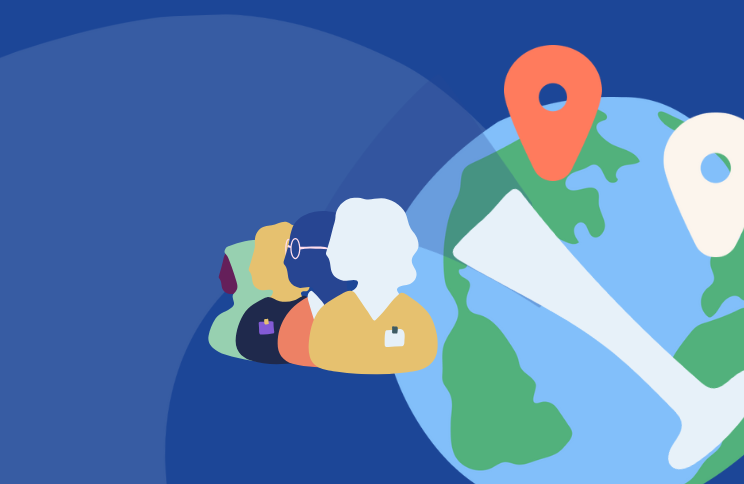
For years, midwives have been missing from global health data. The contributions they make, the systems they work in, and the impact they have on health outcomes are often left out of the picture. We knew we needed to change that.
That’s why, in partnership with Direct Relief, we have created the Midwives’ Data Hub: a first-of-its-kind, open-access platform that brings together trusted data from over 50 sources to make midwives and their impact more visible. The first version of the Hub was launched in 2021, since then, we’ve been listening closely to feedback from our community. Today, we’re proud to introduce a redesigned and reimagined version of the Midwives’ Data Hub—offering improved usability, accessibility, and practical tools.
Built with users in mind
From the beginning, the Midwives’ Data Hub was designed to serve a range of users. Whether you’re a midwife writing a grant proposal, a journalist preparing a story on reproductive health, or a policymaker looking to invest in your country’s workforce—the Hub gives you access to what you need.
The redesigned platform includes features like:
- Search and compare country-specific profiles
- Explore indicators on sexual and reproductive health
- Understand the national policy environment for midwives, midwifery workforce size, structure, and distribution
- Download the full datasets behind the indicators, along with other available data sources
All the data is drawn from recognised, credible global sources such as WHO, UN agencies, and national surveys.
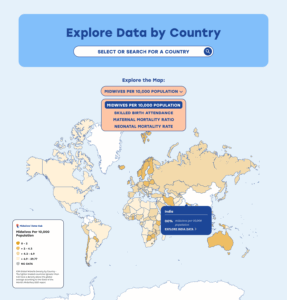 What makes this Hub different
What makes this Hub different
Unlike other health data platforms, the Midwives’ Data Hub puts midwives at the centre. It includes data on maternal and newborn health outcomes and service coverage, midwifery workforce and models of care, the ICM Essential Competencies for Midwifery Practice, and the enabling—or non-enabling—environments and leadership structures that support the profession.
This is the first platform to bring all these indicators together in one place, allow users to compare data across countries in a straightforward, simple-to-use format, and easily share with journalists, policymakers, students, and anyone who has an interest in global health.
A platform for advocacy and change
We know that data alone doesn’t drive change. But data that is accessible, understandable, and easy to use can help midwives and their allies speak more clearly and confidently to decision-makers. That’s why we built this tool to be used in reports, presentations, campaigns and conversations.
You may notice that some data for your country is missing or outdated. That’s because not all governments regularly report on these indicators to global institutions. As of the time of launch, the Hub reports most recently available data, and includes transparent information on the source of every data point, so you can get more information about where the data is from. Then, we encourage you to advocate for your government to collect and properly report this data— so that together, we can build a more complete picture of midwives and their impact on health .
We plan to maintain updates to the Hub regularly and are looking for funders who would like to get involved. Contact us for more information.
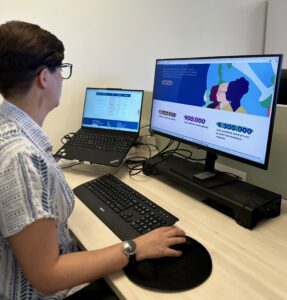 Explore and Share the Hub
Explore and Share the Hub
We invite you to explore the Hub, share it, and use it in your work. We’re proud of what we’ve built, but we’re even more excited about what it can make possible.
We’ve put together a toolkit to help you do just that. You can highlight midwifery data and health outcomes from your own country using one of our editable social media cards.
Below, you’ll see an example of what the card looks like once it’s filled in—alongside suggested caption text and a button that takes you straight to the editable template.
It’s a quick and creative way to spark curiosity, start conversations, and bring others into the data.
Share the Hub
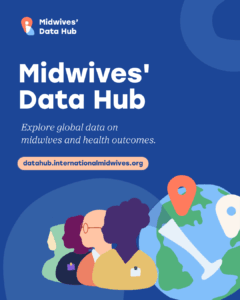 The @world_midwives Midwives’ Data Hub is now live! Explore trusted global data on midwives, the systems they work in, and the outcomes they help shape—country by country.
The @world_midwives Midwives’ Data Hub is now live! Explore trusted global data on midwives, the systems they work in, and the outcomes they help shape—country by country.
Explore it. Share it. Use it to make midwives more visible.
https://datahub.internationalmidwives.org
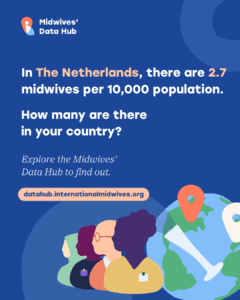 I just checked how many midwives there are in my country—now I’m curious about yours.
I just checked how many midwives there are in my country—now I’m curious about yours.
@world_midwives just launched the Midwives’ Data Hub so we can explore midwifery workforce data around the world.
Explore it. Share it. Use it to make midwives more visible.
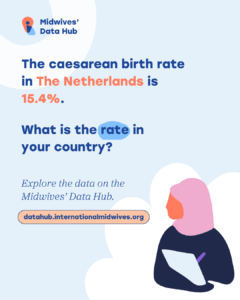 Ever wondered how Caesarean birth rates compare across countries—and what role midwives play?
Ever wondered how Caesarean birth rates compare across countries—and what role midwives play?
@world_midwives just launched a platform where you can explore data on midwives and health outcomes.
🔍 Explore it here: https://datahub.internationalmidwives.org
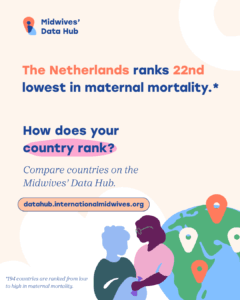 Where does your country rank in maternal mortality—and how strong is your midwifery workforce?
Where does your country rank in maternal mortality—and how strong is your midwifery workforce?
@world_midwives just launched the Midwives’ Data Hub to help us explore those answers.
🔍 Dive into the data: https://datahub.internationalmidwives.org